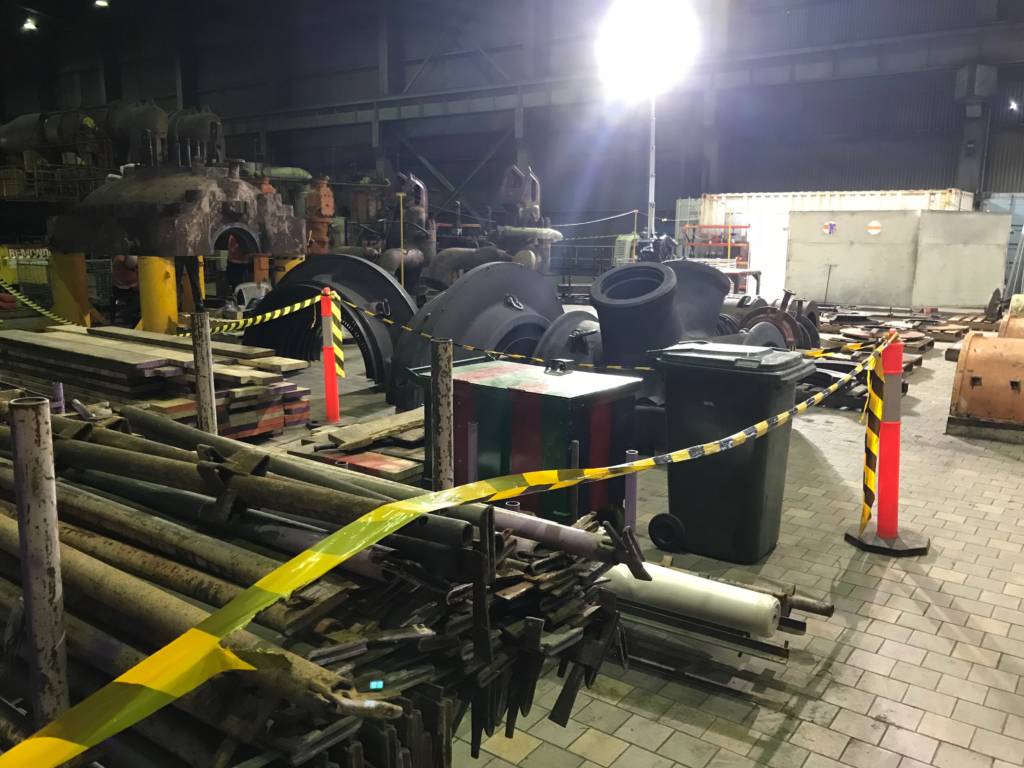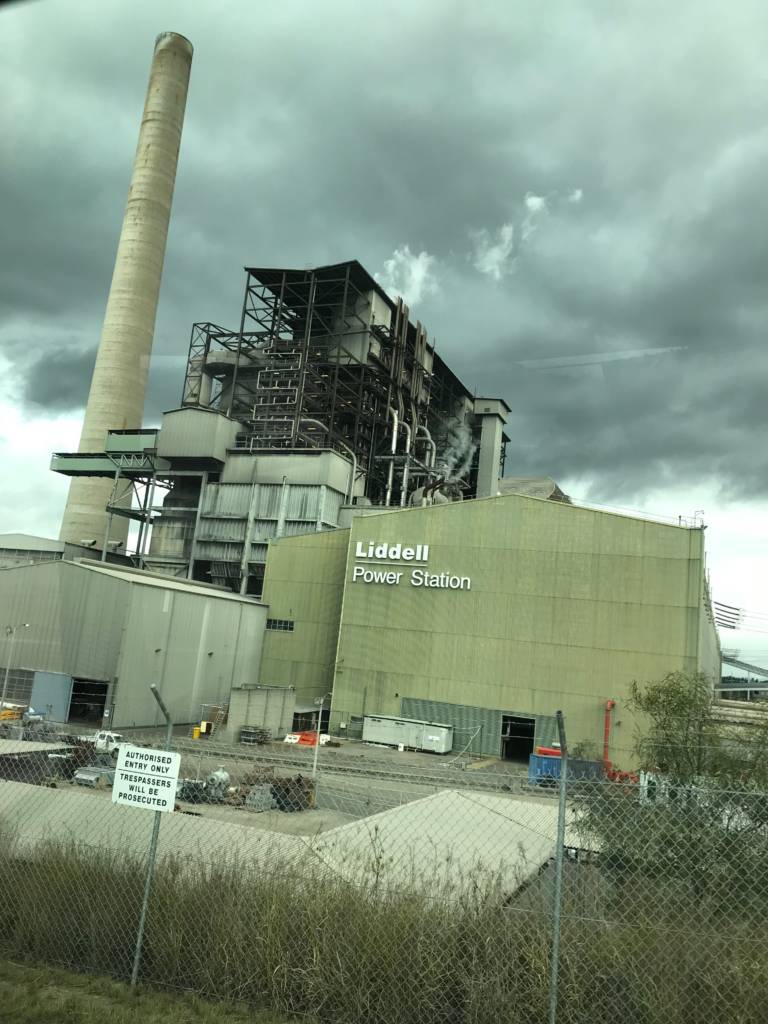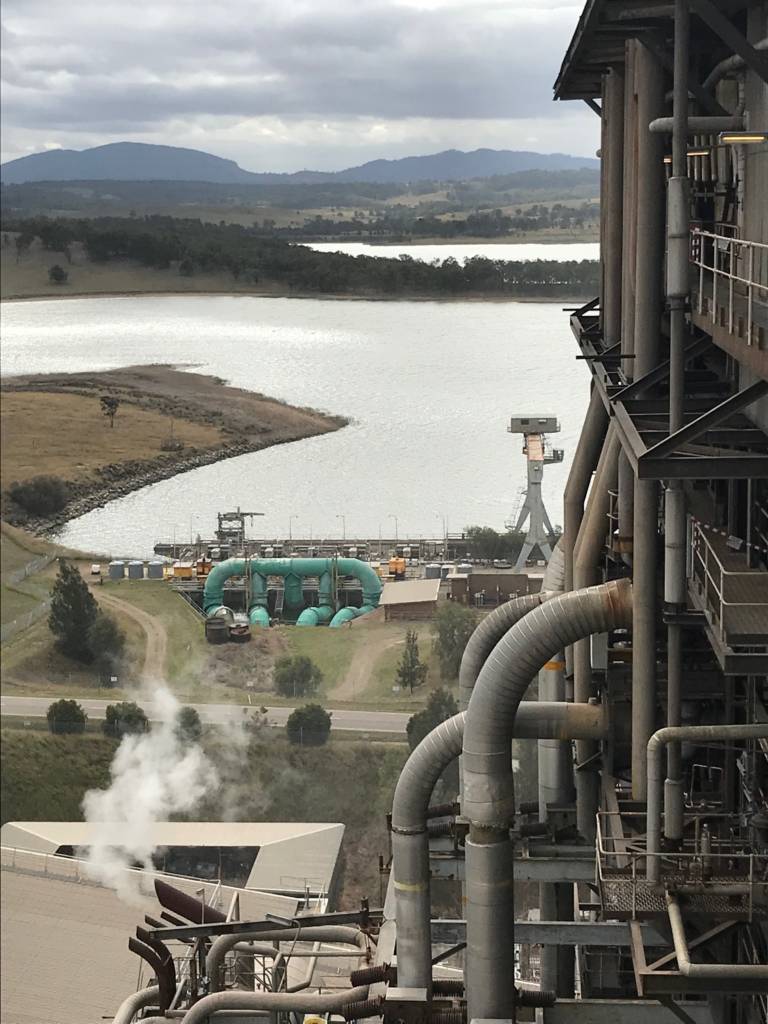A look inside the crumbling Liddell Power Station in the Hunter Valley brings the debate about our national energy future into clear focus. Run down, dangerous and expensive, Liddell is the perfect symbol of the decline of the coal industry.
Liddell was completed in 1973 with an expected lifespan of 25 years. This power station has delivered electricity far beyond its time and has been limping along for years now, currently running at less than half of its original capacity as everything falls to pieces.
On Monday, July 2, Liddell’s owner AGL invited community stakeholders inside the facility.
Liddell’s recent infamy has been earnt as a result of a major national argument between AGL and the Prime Minister, Malcolm Turnbull. AGL is planning to close Liddell in 2022. The Federal Government has attempted to bludgeon, cajole and embarrass AGL into keeping the facility open for at least five more years after that. It has even lured a rival to make a public bid for Liddell on the promise to keep it running.
But AGL has stood firm.
So why has Liddell power station become such a lightning rod?

Liddell’s unit 3 in the process of being stripped and rebuilt after failing. Image by Glen Klatovsky
Liddell symbolises the infuriating fight on energy and climate policy. A year ago, at the Australian Energy Week conference, AGL CEO Andy Vesey, stated that coal could no longer compete with renewables. This fact is devastating for the coal industry. This is likely to be the end-game across the globe for coal. Any coal-fired power plant whose life is extended, or new plant built, ensures ongoing coal demand. So they are fighting hard, right now.
During my tour of the power station, we met employees, many of whom have worked in the sector for decades. There was unanimity about the need to shut down Liddell in 2022. You can see why when you are there. This is an old facility. We all held our breath in the elevator as the staff talked about how often it breaks down. Failed parts were passed around as our guides described the serious and dangerous risks of working within the ageing power plant. These have to be considered in determining how hard to push this old beast.
I have also toured new solar plants and wind farms. It is not just that these facilities are modern and shiny. They are also cheaper to build and run than new coal, gas or nuclear power plants. They don’t create vast greenhouse gas emissions. They don’t require constant, ongoing mining operations. The fuel is essentially free – sunshine and wind. And battery technology is improving so fast. Lithium-ion batteries will fall in price by approximately 93% between 2010 and 2030.
For the National Electricity Market, AGL has developed a plan to replace the current output of Liddell by the date it closes. And for the employees, there is recognition of the need to provide opportunities in the sector as the plan for the transition is delivered.
I was encouraged when talking to Liddell’s staff about the future. The company seems to have provided an adequate timeline for the closure, provided answers to the key questions and invested in the future.
Meanwhile, Canberra appears to inhabit an alternate universe where coal is king. The Abbott faction and the Nationals now demand billions of taxpayers’ dollars to prop up the industry, and build new coal power stations.
The next few months will be pivotal. There is a major policy decision to be made on the proposed National Energy Guarantee (NEG) by the states and the federal government. This issue is likely to dominate the media for the foreseeable future which means more outrageous posturing from Mr Abbott, threatening any chance for a positive way forward.
But don’t be fooled. Coal is not the solution to our energy problems.
This article first appeared in The Newcastle Herald.


